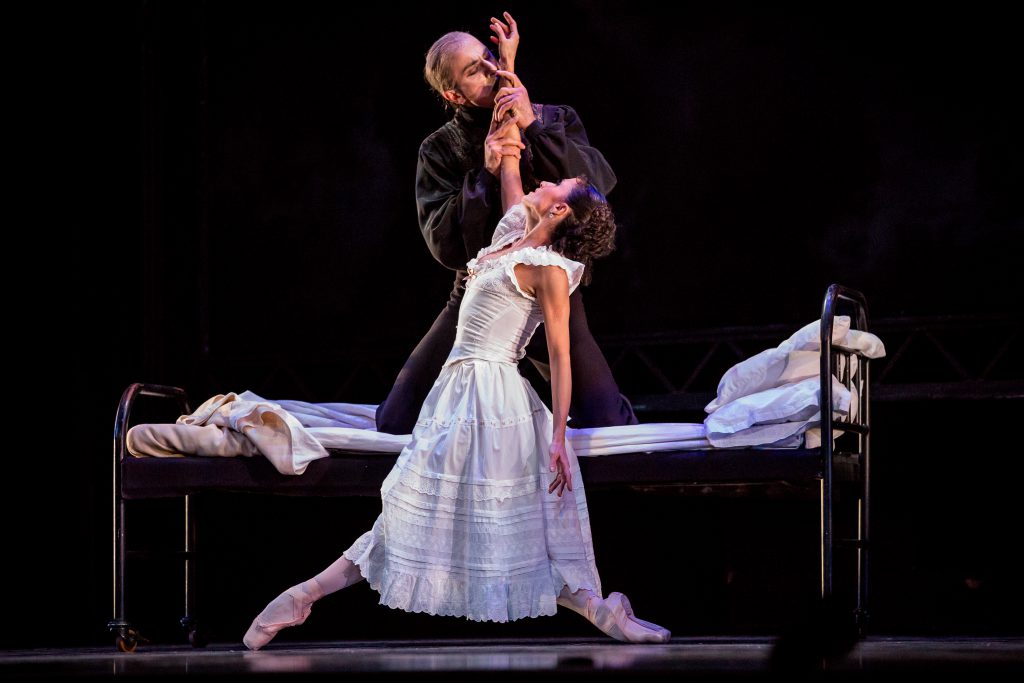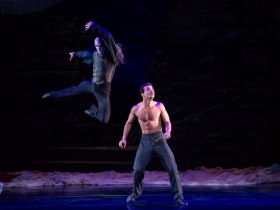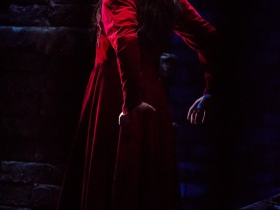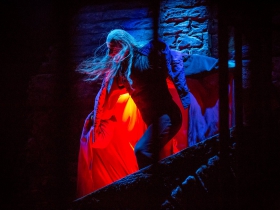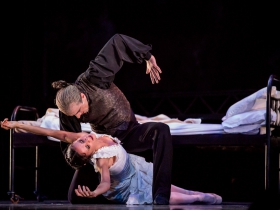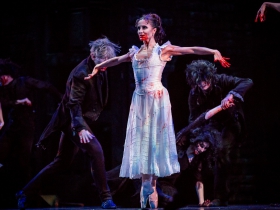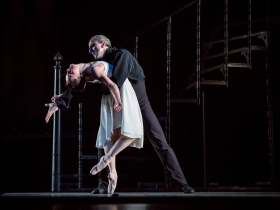Ballet’s ‘Dracula” Makes Horror Seductive
Elegant, atmospheric production boasts strong dancing and potent music.
The Milwaukee Ballet’s “Dracula” gave Bram Stoker’s 1897 classic story the royal treatment last night at the Marcus Center for the Performing Arts, just in time for Halloween.
In his production, which celebrates its 22nd year, Michael Pink, Milwaukee Ballet’s artistic director since 2002, maintained the novel’s integrity, capturing its superstition and terror, while infusing it with beauty and creativity.
Horror never looked quite so elegant and seductive, with graceful dancing, gorgeous 19th-century Victorian-era costumes, gothic sets and a thrilling score by composer Philip Feeney, performed by the Milwaukee Ballet Orchestra and featuring selections from the Florentine Opera.
The production’s Count Dracula character, played by Davit Hovhannisyan, was not exactly as actor Bela Lugosi immortalized on screen, with a black cape, razor-sharp talons for fingernails, fangs, and pointy ears.
However, like Lugosi, and the count in German director F.W. Murnau’s 1922 expressionist film Nosferatu, Hovhannisyan’s Dracula maintained an imposing presence in the performance, but his long gray hair, pale face, lithe figure, vivid floor-length red cape and matching trousers gave him more of an aristocratic and spectral quality than vampires portrayed in cinema.
Randy Crespo was well-cast as the likeable Harker, an innocent character who finds himself unable to escape Dracula’s clutches. Crespo veered deftly from confusion to distress over nearly losing his beloved fiancée Mina.
Nicole Teague-Howell portrayed the virginal Mina with a tenderness and sweetness. Luz San Miguel brought a vivacity to the role of Lucy, Mina’s best friend with many suitors.
Garrett Glassman was superb as Renfield, the madman with the ability to communicate with Dracula. He’s perhaps the noisiest of the characters, beating his fists and clanging metal objects on the ground to signal his anguish. The tragic Renfield later finds himself as the object of Dracula’s sacrifice.
Patrick Howell brought an authoritative and compassionate air to the character of Van Helsing, the doctor who treats Dracula’s victims and tries to reverse his curse.
Feeney incorporated elements of Eastern-European folk music and opera in his somber, romantic score. Florentine Opera singers lend their impressive, crystal-clear vocals In Act III, while the many undead (dressed in ragged black clothing with white and gray face makeup) dance in anticipation of a bloodthirsty ritual, a musical section reminiscent of Carl Orff’s 1930s cantata Carmina Burana.
Award-winning costume and scenic designer Lez Brotherston used authentic sets for the production, including a foreboding brick castle, a lavish ballroom and a dark, dank mental asylum. The use of fog (an essential element of any good horror story) was also prevalent in the production.
Coupled with David Grill’s masterful lighting, an ideal number of shadowy figures and purple and blue hues illuminating the stage, these design elements helped create a spooky and unforgettable Milwaukee Ballet experience.
“Dracula” Gallery
“Dracula” will run through Sunday, October 28 at the Marcus Center for the Performing Arts, 929 N. Water St.
Dance
-
Milwaukee Ballet Brings Back Orchestra
 Jul 14th, 2025 by Bruce Murphy
Jul 14th, 2025 by Bruce Murphy
-
New Riverwest Company, Production Impresses
 Feb 10th, 2020 by Brendan Fox
Feb 10th, 2020 by Brendan Fox
-
Milwaukee Ballet Show Remakes History
 Feb 10th, 2020 by Catherine Jozwik
Feb 10th, 2020 by Catherine Jozwik
Review
-
Eating Burmese in Bay View
 Dec 13th, 2025 by Cari Taylor-Carlson
Dec 13th, 2025 by Cari Taylor-Carlson
-
Casablanca Is a Milwaukee Success
 Nov 30th, 2025 by Cari Taylor-Carlson
Nov 30th, 2025 by Cari Taylor-Carlson
-
Oh, Those Witty 18th Century Brits
 Nov 24th, 2025 by Dominique Paul Noth
Nov 24th, 2025 by Dominique Paul Noth


